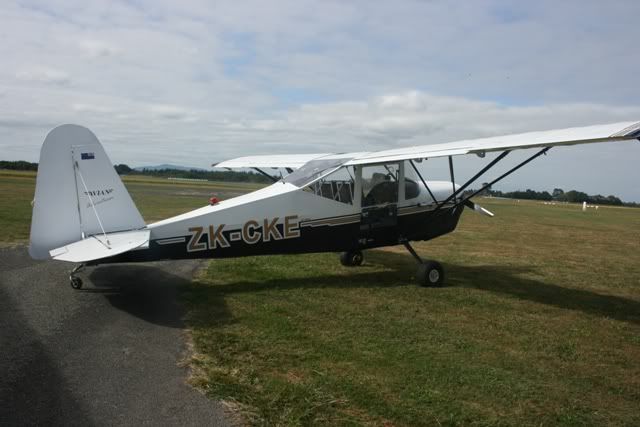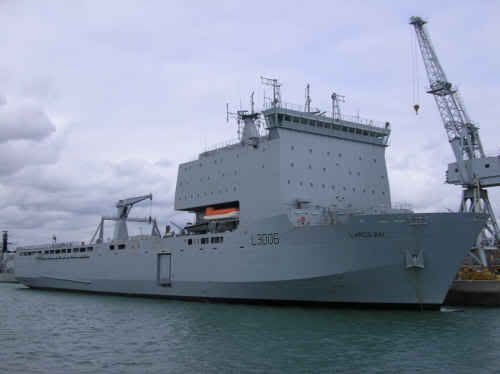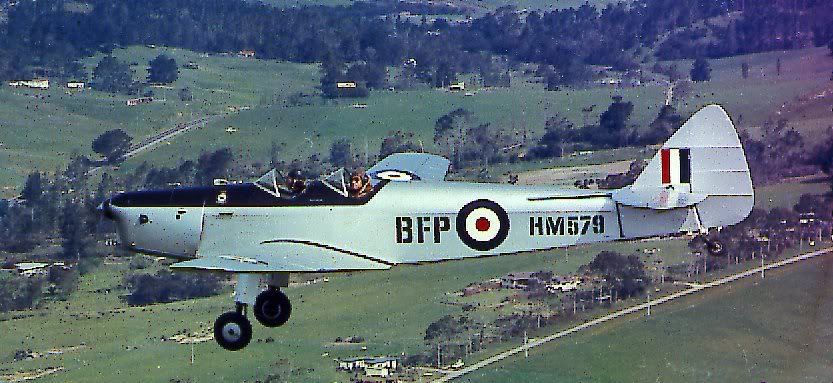Post by fyl on Feb 10, 2012 7:59:09 GMT 12
From Stuff this a.m.
Shes going to be out of action for a long time...what does the crew do in the meantime??
The list of Defence 'issues' at the bottom makes for sorry reading...
Ship doesn't handle well in rough conditions?? Surely this sort of this would be tested and any fixes implemented before the hand-over was made??
Not sure about this, but is it accurate that the NH90's are 2 years behind schedule??
***********************************************************
www.stuff.co.nz/national/politics/6394463/Remedial-work-for-navys-problem-ship
Less than five years after it entered service, the navy's $177 million flagship will be out of action for seven months while it undergoes a long list of repairs.
The multi-role HMNZS Canterbury will be off duty from mid-August until March 2013 while remedial work continues on problems discovered after its construction. The layoff, which includes scheduled maintenance work, will leave the navy without its only transport ship.
The Canterbury entered service in 2007 and has been dogged by controversy since, being the subject of two separate court of inquiry investigations and an independent report.
The report, commissioned after the death of a sailor soon after the ship entered service, recommended $20m of remedial work. That cost has since increased.
Able Seaman Byron Solomon, 22, drowned when an inflatable boat being launched from the Canterbury capsized off the coast of the North Island because of a faulty quick-release shackle.
The report said many of the ship's design problems related to the decision to select a cheaper commercial roll-on, roll-off design used in ferries rather than a purpose-built military vessel.
The process had been rushed and involved a great deal of "wishful thinking", it said.
Problems identified with the Canterbury included ballast and propulsion issues that led to poor handling in rough conditions, badly designed landing craft and radar deficiencies.
In 2010, Australian shipbuilder BAE Systems agreed to pay the Government almost $85m to settle the long-running dispute over problems with the Canterbury and other ships it had provided as part of the $500m Project Protector package.
Commander David Toms, the navy's captain fleet operational support, told an industry magazine last month that remedial work on the Canterbury was only 20 to 25 per cent complete.
Defence Force spokeswoman Katherine O'Donnell said the work had been planned in advance and would not affect any exercises or taskings.
If New Zealand urgently needed an amphibious ship, the Canterbury could be returned to service reasonably quickly or a request could be made of the Australian Navy, she said.
Work to be done included modifications to improve sea-keeping qualities, moving the inflatable boat alcoves higher, modifying the landing craft and upgrading the medical facilities.
It will be undertaken at the Devonport Naval Base.
Defence Minister Jonathan Coleman said the remediation work would be covered by the BAE settlement and there would be no extra cost to the taxpayer.
Ad Feedback
"In future I will expect officials to be vigilant about acquisitions."
THE STORY SO FAR
May 2004: The Government accepts a tender from Tenix Defence Systems (now BAE) for Project Protector, the construction of seven new ships, including the Canterbury, for $500m.
September 2005: Construction of the Canterbury begins in the Netherlands, based on a commercial design.
August 2006: The ship arrives in Australia for a military fitout.
May 2007: The Defence Force accepts the ship and commissions it the same day.
July 2007: One of the rigid-hulled inflatable boats is lost at sea as the ship struggles in a storm.
October 2007: Able Seaman Byron James Solomon, 22, dies after one of the inflatable boats capsizes while alongside the Canterbury.
February 2008: After several defects with the Project Protector fleet are identified, negotiations with BAE for compensation begin, delaying the delivery of the remaining ships.
May 2008: An independent review finds the Canterbury acquisition was rushed and reveals multiple problems with the ship.
February 2010: BAE agrees to fork out nearly $85m to fix problems with the Project Protector fleet.
April 2010: The navy confirms some of the money will be used to buy new landing craft for the ship.
SHIP GLITCHES
Canterbury's rigid-hulled inflatable boat alcoves were too close to the waterline.
The landing craft were badly designed, which led to cracking in the bow ramp doors.
The ship's propellers came out of the water in heavy seas, causing engine damage.
The ship handles poorly in rough weather. Improvements to ballast and the fuel-transfer system needed.
The anti-roll system does not work in heavy conditions.
An inability to track helicopters by radar at the required range and height.
Waves crashing over the front of the ship could wreck its gun.
Procurement ProblemsNH90 medium-range helicopters. Cost: $771m. The first two arrived in December, more than two years late.
A109 light/training helicopters. Cost: $139m. All have now arrived. Project three months behind schedule.
P3 Orion surveillance aircraft systems upgrade. Cost: $352m. Expected to be completed in 2013, 2 ½ years late.
C130 Hercules transport life extension. Cost: $254.9m. The third of five Hercules is due to be completed in June, several years behind schedule.
- © Fairfax NZ News
Shes going to be out of action for a long time...what does the crew do in the meantime??
The list of Defence 'issues' at the bottom makes for sorry reading...
Ship doesn't handle well in rough conditions?? Surely this sort of this would be tested and any fixes implemented before the hand-over was made??
Not sure about this, but is it accurate that the NH90's are 2 years behind schedule??
***********************************************************
www.stuff.co.nz/national/politics/6394463/Remedial-work-for-navys-problem-ship
Less than five years after it entered service, the navy's $177 million flagship will be out of action for seven months while it undergoes a long list of repairs.
The multi-role HMNZS Canterbury will be off duty from mid-August until March 2013 while remedial work continues on problems discovered after its construction. The layoff, which includes scheduled maintenance work, will leave the navy without its only transport ship.
The Canterbury entered service in 2007 and has been dogged by controversy since, being the subject of two separate court of inquiry investigations and an independent report.
The report, commissioned after the death of a sailor soon after the ship entered service, recommended $20m of remedial work. That cost has since increased.
Able Seaman Byron Solomon, 22, drowned when an inflatable boat being launched from the Canterbury capsized off the coast of the North Island because of a faulty quick-release shackle.
The report said many of the ship's design problems related to the decision to select a cheaper commercial roll-on, roll-off design used in ferries rather than a purpose-built military vessel.
The process had been rushed and involved a great deal of "wishful thinking", it said.
Problems identified with the Canterbury included ballast and propulsion issues that led to poor handling in rough conditions, badly designed landing craft and radar deficiencies.
In 2010, Australian shipbuilder BAE Systems agreed to pay the Government almost $85m to settle the long-running dispute over problems with the Canterbury and other ships it had provided as part of the $500m Project Protector package.
Commander David Toms, the navy's captain fleet operational support, told an industry magazine last month that remedial work on the Canterbury was only 20 to 25 per cent complete.
Defence Force spokeswoman Katherine O'Donnell said the work had been planned in advance and would not affect any exercises or taskings.
If New Zealand urgently needed an amphibious ship, the Canterbury could be returned to service reasonably quickly or a request could be made of the Australian Navy, she said.
Work to be done included modifications to improve sea-keeping qualities, moving the inflatable boat alcoves higher, modifying the landing craft and upgrading the medical facilities.
It will be undertaken at the Devonport Naval Base.
Defence Minister Jonathan Coleman said the remediation work would be covered by the BAE settlement and there would be no extra cost to the taxpayer.
Ad Feedback
"In future I will expect officials to be vigilant about acquisitions."
THE STORY SO FAR
May 2004: The Government accepts a tender from Tenix Defence Systems (now BAE) for Project Protector, the construction of seven new ships, including the Canterbury, for $500m.
September 2005: Construction of the Canterbury begins in the Netherlands, based on a commercial design.
August 2006: The ship arrives in Australia for a military fitout.
May 2007: The Defence Force accepts the ship and commissions it the same day.
July 2007: One of the rigid-hulled inflatable boats is lost at sea as the ship struggles in a storm.
October 2007: Able Seaman Byron James Solomon, 22, dies after one of the inflatable boats capsizes while alongside the Canterbury.
February 2008: After several defects with the Project Protector fleet are identified, negotiations with BAE for compensation begin, delaying the delivery of the remaining ships.
May 2008: An independent review finds the Canterbury acquisition was rushed and reveals multiple problems with the ship.
February 2010: BAE agrees to fork out nearly $85m to fix problems with the Project Protector fleet.
April 2010: The navy confirms some of the money will be used to buy new landing craft for the ship.
SHIP GLITCHES
Canterbury's rigid-hulled inflatable boat alcoves were too close to the waterline.
The landing craft were badly designed, which led to cracking in the bow ramp doors.
The ship's propellers came out of the water in heavy seas, causing engine damage.
The ship handles poorly in rough weather. Improvements to ballast and the fuel-transfer system needed.
The anti-roll system does not work in heavy conditions.
An inability to track helicopters by radar at the required range and height.
Waves crashing over the front of the ship could wreck its gun.
Procurement ProblemsNH90 medium-range helicopters. Cost: $771m. The first two arrived in December, more than two years late.
A109 light/training helicopters. Cost: $139m. All have now arrived. Project three months behind schedule.
P3 Orion surveillance aircraft systems upgrade. Cost: $352m. Expected to be completed in 2013, 2 ½ years late.
C130 Hercules transport life extension. Cost: $254.9m. The third of five Hercules is due to be completed in June, several years behind schedule.
- © Fairfax NZ News













